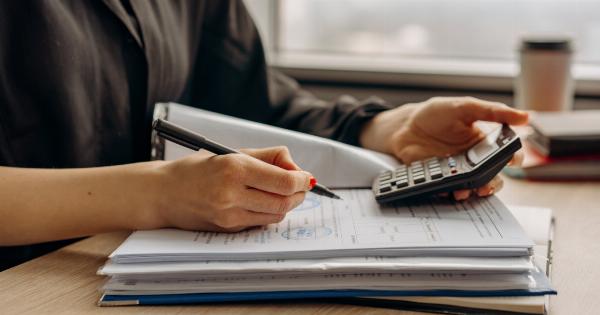If you have been struggling with acne and blackheads, you are not alone. These common skin problems can be quite frustrating and can take a toll on your self-esteem.
While there are numerous commercial products available in the market to treat these issues, they often contain harsh chemicals and can be quite expensive. Fortunately, there is a natural, affordable, and effective solution that you can easily create at home – a baking soda mask for acne and blackheads.
Why Baking Soda?
Baking soda, also known as sodium bicarbonate, is a versatile ingredient found in almost every household. It has numerous uses, including skin care, due to its natural cleansing and exfoliating properties.
Baking soda helps to regulate the pH balance of the skin, and its gentle yet effective exfoliating action helps remove dead skin cells and unclog pores, reducing the appearance of acne and blackheads.
How to Make a DIY Baking Soda Mask
Making a baking soda mask at home is incredibly simple and requires only a few basic ingredients:.
1. Baking Soda
Start by gathering the main ingredient – baking soda. You can easily find it in the baking aisle of your local grocery store or supermarket. Ensure that it is pure baking soda without any additives.
2. Water
In order to create a paste-like consistency, you will need to mix baking soda with water. Use filtered water to avoid any impurities that may irritate your skin.
3. Optional Additions
While a basic baking soda and water mask can be highly effective, you can enhance its benefits by adding a few additional ingredients. Some popular choices include:.
A. Honey
Honey has antibacterial properties and can help soothe inflamed skin. It also acts as a natural moisturizer, leaving your skin feeling soft and hydrated.
B. Lemon Juice
Lemon juice is a natural astringent that can tighten pores and even out skin tone. It also contains vitamin C, which can help fade acne scars and blemishes.
C. Tea Tree Oil
Tea tree oil is renowned for its antibacterial and anti-inflammatory properties. It can effectively kill acne-causing bacteria and reduce redness and inflammation associated with acne and blackheads.
D. Apple Cider Vinegar
Apple cider vinegar helps balance the pH level of the skin, reducing the production of excess oil. It also possesses antimicrobial properties, making it a beneficial addition to your baking soda mask.
How to Prepare and Apply the Mask
Now that you have all the necessary ingredients, follow these simple steps to prepare and apply the baking soda mask:.
Step 1: Mixing the Ingredients
In a small bowl, combine one to two teaspoons of baking soda with a few drops of water. Stir well until you achieve a smooth, paste-like consistency. If you are using any additional ingredients, add them at this stage and mix thoroughly.
Step 2: Cleansing Your Face
Before applying the mask, cleanse your face using a gentle cleanser to remove any dirt, oil, or makeup residue. Pat your skin dry with a clean towel.
Step 3: Applying the Mask
Using clean fingertips or a brush, apply the baking soda mask evenly to your face, focusing on the areas with acne or blackheads. Avoid the sensitive eye and mouth areas.
Step 4: Allowing the Mask to Sit
Leave the mask on for about 10 to 15 minutes, allowing it to dry. You may experience a tingling sensation, which is normal. However, if you feel any irritation or discomfort, remove the mask immediately.
Step 5: Rinsing Off the Mask
After the recommended time, gently rinse off the mask with lukewarm water. Make sure to remove all traces of the mask and pat your skin dry with a towel.
Step 6: Moisturizing Your Skin
Finally, apply a light, oil-free moisturizer to hydrate your skin and lock in moisture. This step is crucial to prevent your skin from drying out.
How Often Should You Use the Baking Soda Mask?
While the baking soda mask can be effective, it is important not to overuse it. The frequency of applying this mask depends on your skin type and sensitivity.
For most people, using the mask once or twice a week should be sufficient to achieve desired results. However, if you have sensitive or dry skin, it is advisable to consult a dermatologist before incorporating this mask into your skincare routine.
Precautions and Tips
Although the baking soda mask is generally safe to use, it is essential to keep the following precautions and tips in mind:.
1. Patch Test
Before applying the mask to your face, perform a patch test on a small area of your skin, preferably on your inner arm. This will help you determine whether your skin reacts negatively to the mask.
2. Avoid Open Wounds or Irritated Skin
Do not use the baking soda mask on open wounds, sunburned skin, or highly irritated areas. Baking soda may cause additional discomfort or stinging sensation.
3. Moisturize After Every Use
Since baking soda can be drying to the skin, it is crucial to moisturize immediately after rinsing off the mask. This will help maintain the natural balance of your skin and prevent it from becoming overly dry.
4. Sun Protection
After using the baking soda mask, it is essential to apply sunscreen with at least SPF 30 to protect your skin from harmful UV rays. Baking soda can make your skin more sensitive to the sun, so take extra precautions.
Conclusion
A DIY baking soda mask can be an excellent addition to your skincare routine, especially for combating acne and blackheads.
Its natural exfoliating and pH-balancing properties can help unclog pores, remove dead skin cells, and reduce the appearance of acne and blackheads. Remember to use the mask in moderation, moisturize your skin properly, and take necessary precautions to avoid any adverse reactions. With consistent use, you can enjoy the benefits of clearer, smoother, and healthier-looking skin.































